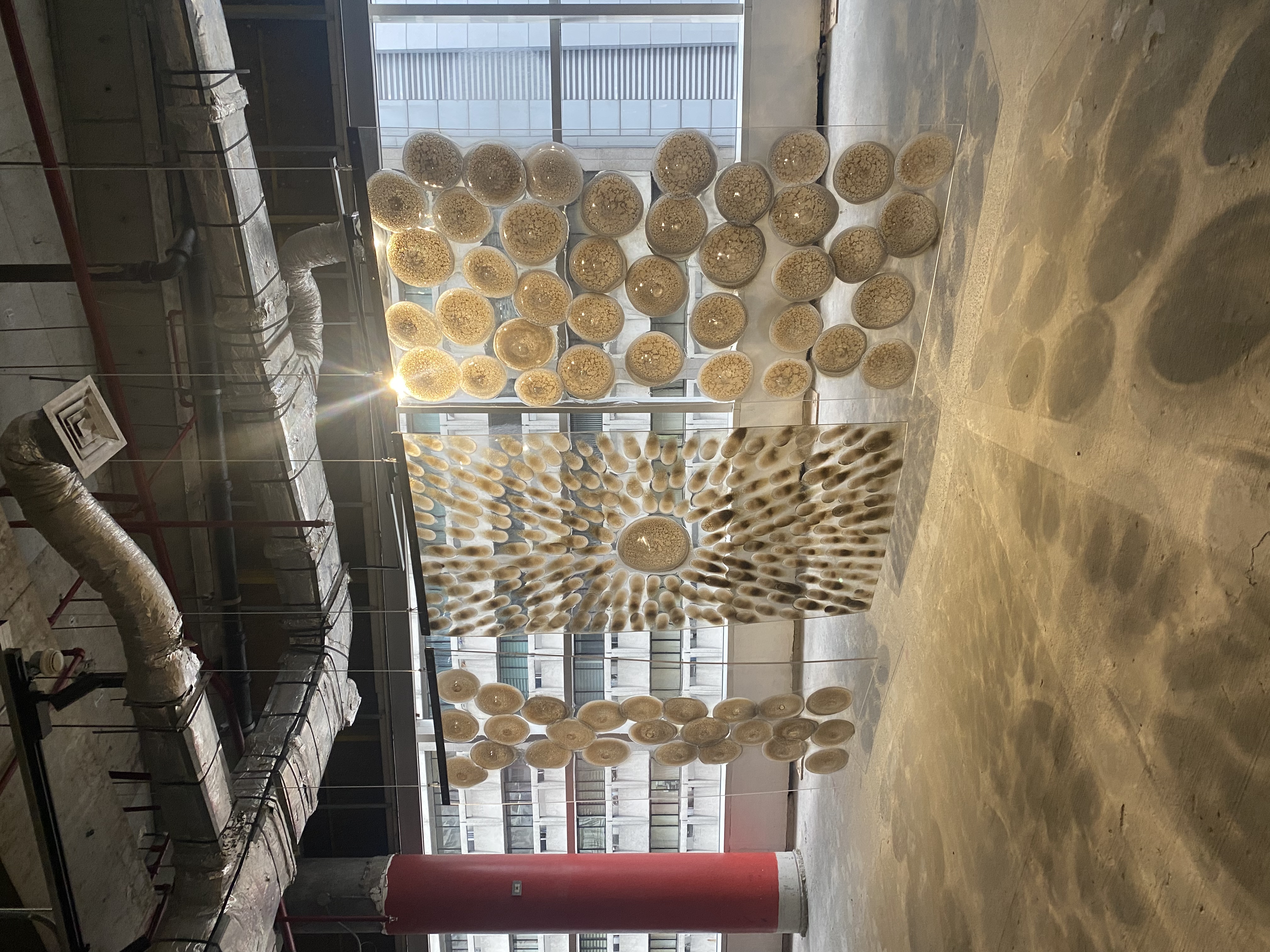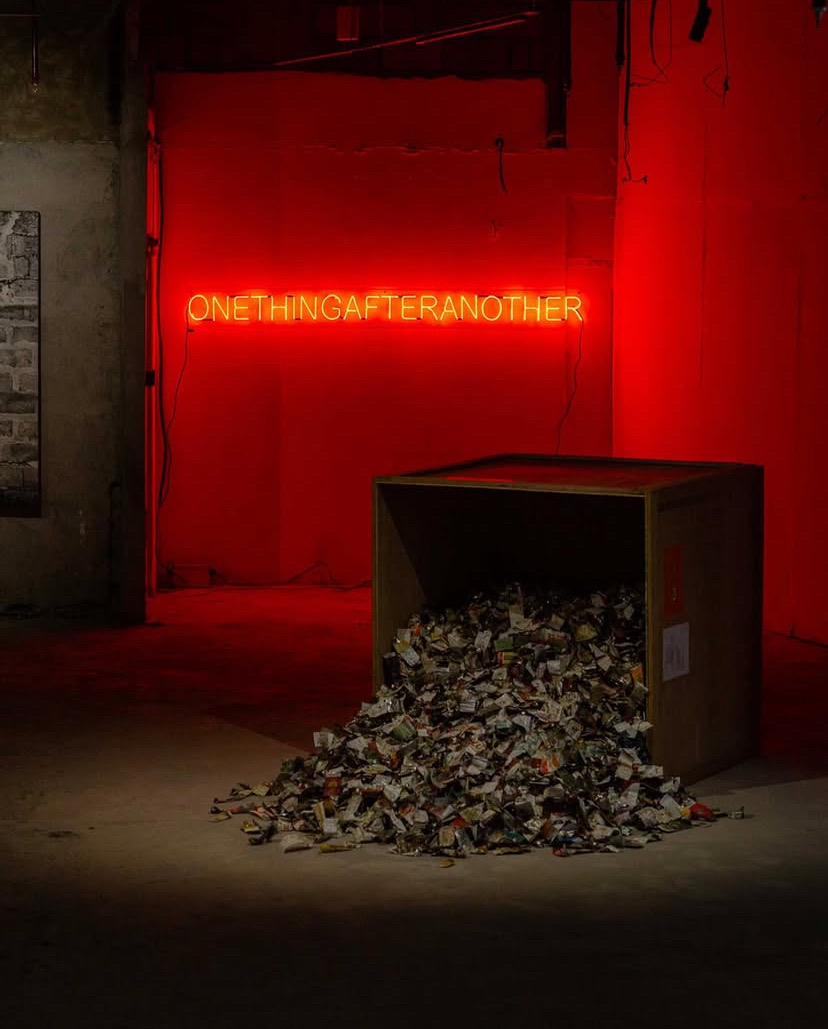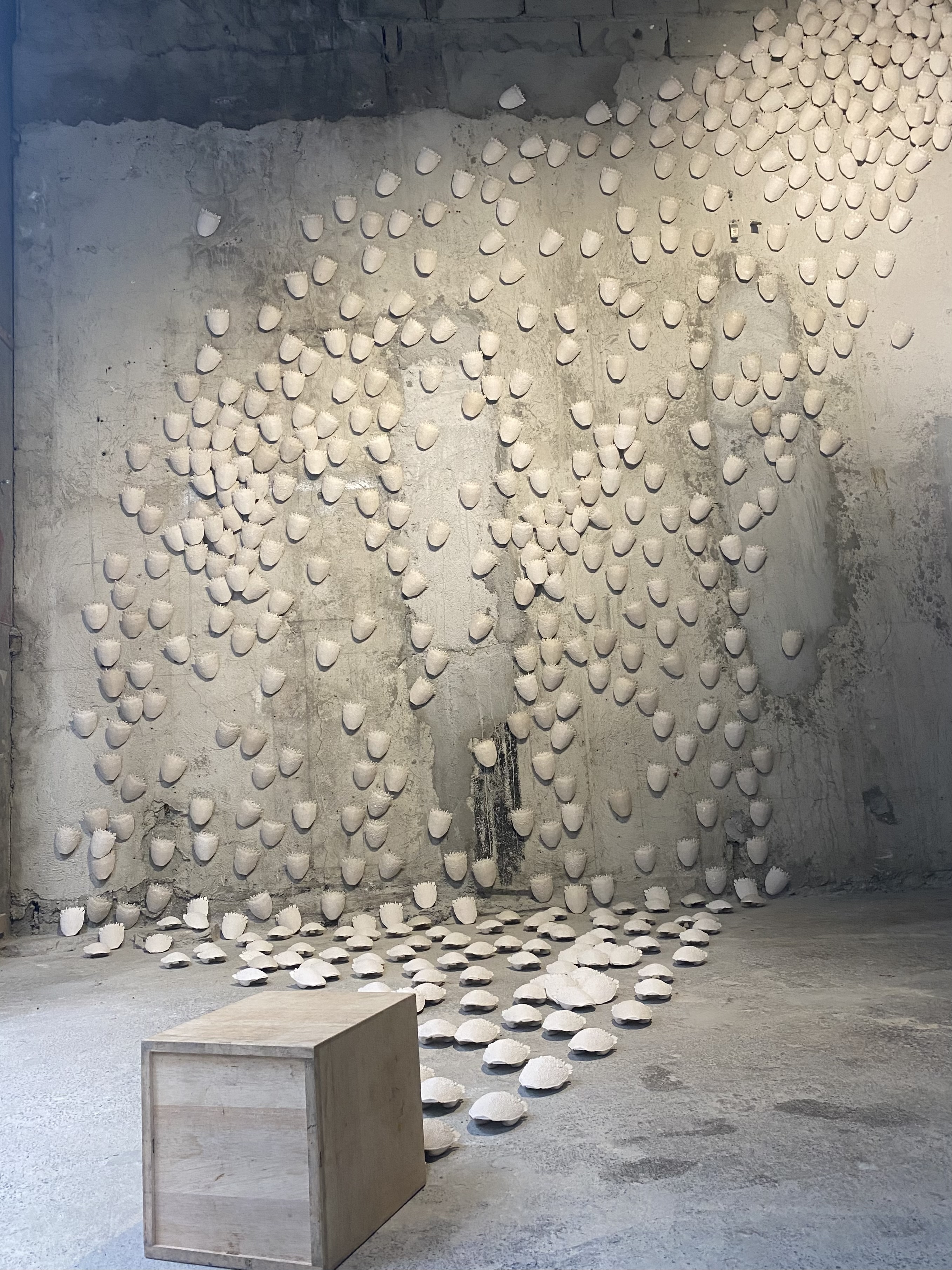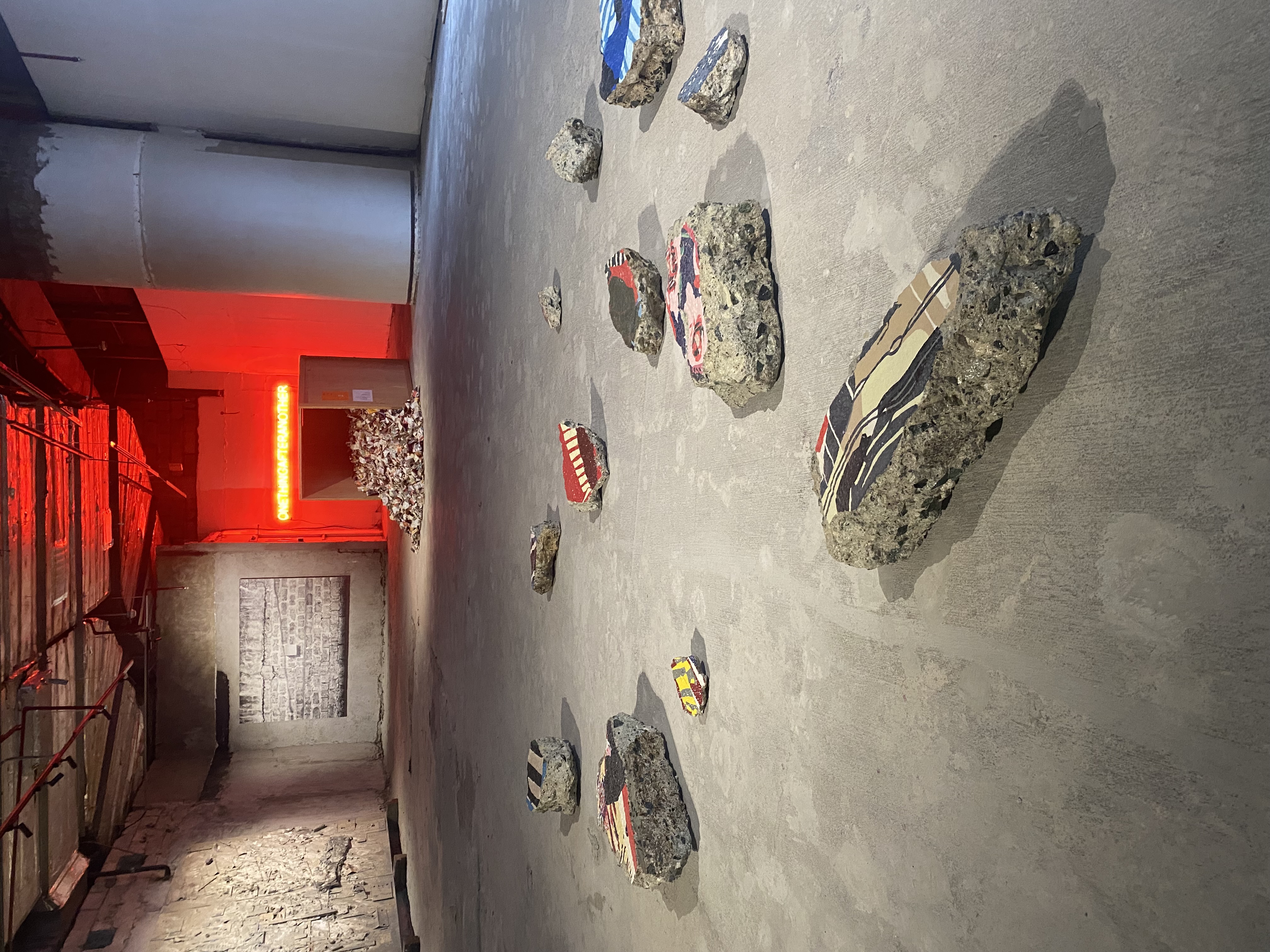Inhabiting a seemingly abandoned warehouse space in RCBC Plaza, with the circuitry and grit of its construction left largely unadorned, the show Here & Now & Now & Then considered the shifty negotiations that can occur between an artwork and the space it traverses, spotlighting the ways a crude space can become a fertile ground for artistic intervention. The show seemed to be asking us: how does art cohabitate with its context? How does art actively, tangibly shape its surroundings? And conversely, how does the art’s surroundings reconfigure how we approach the art?
In his practice, curator Nilo Ilarde displays a deep sensitivity to these questions. Describing Ilarde’s approach to curation in his exhibition notes, Cocoy Lumbao Jr. writes, “it is not just the objects; it is not all about the content. The context, or the space, also has its own manner of speaking.” What then does this space tell us?
RCBC Plaza, a modern office complex known for its sleek and imposing glass interiors, serves as the backdrop of this exhibition, whose space was remarkably austere. One entered the space as though entering a completely opposite world from the Plaza, one of ruin and wreckage, open piping and undone concrete. Save for the extreme airconditioning, the space provoked something almost apocalyptic.
The exhibition’s setting provided not just a way into the art, physically speaking, but a way to think through its materiality, solidity, and spatial dimensions. Ilarde is a clever curator, and the curatorial impulses on display here, showcasing works gathered from a total of 19 artists, possessed a puzzle-like, riddler’s quality to them.
Consider the method of framing, for instance, of Marco Santos’s hanging, scorched acrylic-plexiglass hybrid as it caught light from the windows surrounding it. Or how Poklong Anading’s “fallen map” pieces, literal shards of painted rubble one can tiptoe around on, led to Ilarde’s own accumulation of paint tubes, cheekily titled “faulty landscape.”
Making my way through the space, I was never quite sure where to turn, what kind of work might be greeting or confronting me in turn. That sense of unpredictability felt central to this exhibition, one whose title alone, in its redirection of the word “now,” gestures at both a dislocation of time and place. Going against the idea of an antiseptic white cube gallery space, the exhibition’s format seemed designed for digression and meandering.
Lumbao Jr. approached this method with an attitude of expansiveness: “The term art space has long served as a neutral descriptor—functional, even forgettable. Yet today, it carries with it a persistent shift in meaning… it signals a broader approach to art-making: one that values openness over enclosure, process over product, and dialogue over display.”
Openness, process, and dialogue all cropped up in one way or another in this show. Made from cut-up bangka fragments from the fishing villages of Bulacan and Pampanga, Pete Jimenez’s “Tall Order” series jutted from the ground up, conjuring an image of shark’s fins. Accompanying this were more pieces of cut-up boat made to resemble waves. The sea figured heavily as well in Elaine Navas’s piece “Nothing Moves Itself,” a five-panel painting of placid blue from 2017 that is a rich showcase of the artist’s signature nuanced brushstrokes. In these pieces, oceanic themes were transformed through each artist’s meticulous handling of their respective medium, all of which emphasized play and process over product.
Perhaps because of the atypical rawness of the setting, the oddity of each work—or you could say gimmick—was magnified. Juni Salvador referenced Duchamp’s Dadaist approach with her tilted case filled with wood carvings, framed by two panels and held together by nylon string. Meanwhile, the unsettling “Pheromones” by Jose Santos III showed a widespread assembly of over 500 cockroach-like resin sculptures crawling into a hole.
The flipside to this was that other works felt merely subservient to the pervading atmosphere of the place, a submission to setting. Gary Ross-Pastrana’s boat reassembly “Stream” paled in comparison to the rest of the maritime-inspired works of the show, whereas Christina Quisumbing Ramilo’s collected sandpaper sheets, arranged in a brick format, did little to stand out from its background. While lacking in visual spectacle, both pieces alluded to the accumulations that often go unnoticed in raw conditions, like bits of history floating across a nameless time.
These errant masses—of wood, sandpaper, cockroaches, waves, paint tubes—worked to defamiliarize us with the stuff of everyday life. Just like the space these works lived in, the best of these artworks incited active participation amongst the audience, something that’s often neglected within the decorum and proprieties of the typical white-cube space.
Caught in this in-between world of the constructed and unbuilt, the urban and the rustic, Here & Now & Now & Then was an invitation to look closely, to zoom out, and meander some more.




